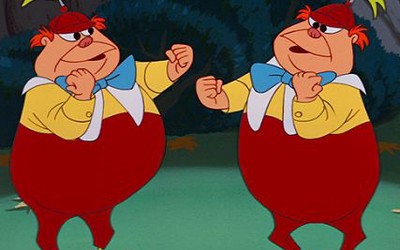
FAVORITES: Capablanca vs Treybal 1929
A game which I've always regarded as the consummate positional masterpiece...I remember how I used to dread going up against closed positions because it seemed so difficult to break through them. After all, what if your opponent just curled up into a tight little ball? There even seemed to be a peculiar advantage in being restricted to the last two or three ranks: he or she would have much less territory to defend that way.
It was seeing games like these--and yes, this one especially--that helped to cure me of that particular fear.
It has that same easy inevitability which Tarrasch and Rubinstein would on occasion achieve. Each move becoming a sort of brick in the edifice, laid on one by one until the monument is complete (and all according to some masterful and far-seeing blueprint).
Or so it seems anyway. In truth, that effect is all a bit illusory (it's not as though Capa really saw the game the whole way through from move one of course). But it definitely adds to the artistic impression which such a game can give.
And what a pawn structure! From KR6 to QN6 (for of course that was how I thought of it when I first came upon this game). :) All held in place (so to speak) by that pivot on K3! It seemed to me to be like some sort of giant unfurled umbrella.
Or, as Golombek put it: "White's pawn structure presents a most pleasing, aesthetic picture." :)
Unfortunately, SF's comments here prove uniformly unilluminating--as is likely to be the case in a game where there aren't too many tactical motifs afoot (if only there was some way to shut that damn Engenie off!). And btw the alternative variation it gives with 34... Qd8 is downright befuddling (what's with that White king walk?--or 41 a5?).
So it's books to the rescue! :D I have on hand the tomes on JC by Golombek and Reinfeld. Herewith a sampling of their commentary [with occasional bracketed remarks by yours truly].
Fred lists Black's 6th move (...f5) as a "serious strategical error." Harry also questions it, although he notes that it is "dangerous in the hands of an attacking player."
They both suggest 13... Nxe5 (although as Reinfeld points out, "In any event, the position is not attractive").
And they praise Capa for keeping Black cramped by avoiding further exchanges (with 19 Nf3).
FR seems to feel that 19... dc would've been a bit better than Black "allowing himself to be trussed up completely" by the upcoming 20 c5. However, HG (who notes that that had been Brinckmann's suggestion in the tournament book) indicates that White can then proceed effectively with the a4/b5 idea.
Of 20 c5, Reinfeld says: "White's objective is now to break through with b5. This requires quite a bit of preparation, but it will be absolutely decisive when it finally comes."
[As some opponent or other once noted of Capablanca: "You always knew exactly what he was going to do...and there was never anything you could do about it."] :)
HG and FR both point out that JC's 24 g4 forestalls any possibility of Black getting in ...g5.
[It's also interesting to note that White's "attack" on the kingside is ultimately a means of preventing Black from getting any play over there; eventually Capa blocks things off completely on that wing so that his play can come thundering through on the other side.]
And they both give the alternative 36... cb 37 h6+ Kf8 38 c6+ winning a piece (one of the rare tactical points in this game)--Golombek noting that it explains that Qa3 maneuver.
Here's Reinfeld, on the position after Black's 39th move: "Now comes a classic winning procedure, based on occupation of the a-file, the establishment of an outpost at a7, and finally irresistible pressure on the b-pawn."
After 46 Qa3, Golombek says: "Now Black's rook cannot leave the back rank to defend the b-pawn by ...Rd7 because of Ra8 winning the queen." (!)
[Oh yeah, and the stacking of all White's pieces on the a-file on move 55 is rather humorous.] :)
As Reinfeld sums things up in his final note: "A perfect example of the 'encirclement' of a cramped position." Perfect indeed!
More blog posts by MrPushwood

When Computers Sucked
It may well seem a strange thing to recall (in these days of the Silicon Swami), but there was a tim…
Overcompetitiveness in Chess
Yep, sometimes it can really start to look like Tweedledum and Tweedledee out there...or maybe that …
Duncan The Subtle
"Explore the unique and confusing chess of Canadian Grandmaster Duncan Suttles." :D